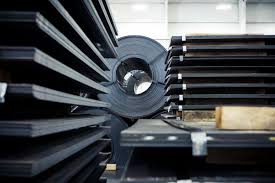Optimizing your design for sheet metal fabrication is critical because it improves manufacturing productivity, lowers costs, and increases product quality. By simplifying designs, reducing material waste, and adopting standard tolerances, you may expedite the manufacturing process, resulting in shorter turnaround times and fewer errors. This not only reduces production and material costs but also results in more dependable, high-quality products. Furthermore, effective design optimization simplifies assembly and maintenance, improves communication with fabricators, and, ultimately, provides a competitive advantage in the market by delivering superior products effectively and sustainably.
What’s Sheet Metal Fabrication?
Sheet metal fabrication is the process of making parts and structures from thin sheets of metal. Cutting, bending, and assembling are some of the methods utilized to create components with precise shapes and sizes. Steel, aluminum, copper, and brass are popular materials for sheet metal fabrication. Sheet metal services are adaptable and can be utilized for a wide range of purposes, from manufacturing industrial machinery to creating delicate electronic enclosures.
Design Considerations for Sheet Metal Fabrication
Material Selection: Factors to Consider
When choosing materials for sheet metal manufacturing, various considerations should be considered:
- Strength and Durability: The material must be able to endure both the required load and the environmental conditions.
- Flexibility: Certain applications require materials that can be bent or shaped without cracking.
- Cost: Material costs are critical, especially for large manufacturing runs. The balance between performance and cost efficiency is critical.
- Corrosion Resistance: Materials having high corrosion resistance, such as stainless steel or aluminum, are favored for use in severe situations.
Sheet Metal Design Tips
- Minimizing Waste: Create pieces that maximize material consumption while reducing scrap. Nesting pieces efficiently on standard-size sheets can considerably reduce waste.
- Reduce Complexity: Simplify designs to reduce the number of cuts, bends, and welds. This not only shortens manufacturing time, but also reduces the possibility of errors.
- Standard Tolerances: Understanding and implementing standard tolerances in sheet metal fabrication is critical. Overly tight tolerances can make production more difficult and expensive. If great precision is not required, aim for industry standard tolerances.
Tips for Optimizing Sheet Metal Design
Reducing the number of bends
Reduce the amount of bends in a sheet metal item to simplify the production process. Each bend necessitates accurate tooling and setup, which adds time and cost to manufacturing. When possible, consolidate bends or modify elements to reduce the total number of bends while maintaining functionality.
Using Standard-Sized Sheet Metal Stock
Designing parts to fit standard-sized sheet metal stock can help to decrease material costs and waste. Standard sizes are frequently more widely available and less expensive than custom sizes. When parts are built with standard sizes in mind, it makes procurement easier and reduces lead times.
Designing for Manufacturability: Common Pitfalls to Avoid
- Avoid Tight Radii: Small bend radii can cause cracking and deformation of the material. Follow the material’s minimum bend radius specifications.
- Design bends in the same way whenever possible. This minimizes the need to adjust the sheet, saving time and eliminating errors.
- Avoid Overlapping Bends: Overlapping bends can complicate the bending operation and necessitate specific tooling, raising costs.
Incorporating Features that Facilitate Easier Fabrication
- Relief Cuts: To prevent tearing and material deformation, make relief cuts at the corners of bends.
- Hole Sizes and Locations: To reduce distortion during bending, ensure that holes are standard size and not too close to bends or edges.
- Tabs and Slots: Tabs and slots make it easier to assemble and align parts. This may reduce the requirement for additional fittings during assembly.
Design for Assembly Considerations
Designing for ease of assembly is just as important as designing for fabrication. Consider the following:
- Self-Locating Features: Create pieces that can self-align during assembly, reducing the need for sophisticated fixtures.
- Ease of Access: Make sure all parts are easily accessible for assembly and maintenance. Avoid designs that make components difficult to access or necessitate disassembly of other parts.
- To expedite the assembly process, use standard fasteners and keep the number of distinct fastener types to a minimum.
Importance of Communication with Fabricators
Effective communication with fabricators is critical to successful sheet metal design and fabrication. Provide precise designs and explicit specifications to minimize misunderstandings and ensure that the finished project matches your expectations. Below are some best practices:
- Detailed Blueprints: Incorporate all required measurements, tolerances, and material specifications into your blueprints. Detailed drawings assist fabricators in comprehending your design purpose and avoiding mistakes.
- Clear Specifications: Include any particular requirements, such as surface finishes, heat treatments, or assembly instructions.
- Regular Feedback: Maintain open communication with your fabricator throughout the design and production process. Regular input can help detect possible problems early and allow for prompt corrections.
Conclusion
Optimizing your design for sheet metal fabrication services is important in achieving efficient, cost-effective, and high-quality production. You can obtain better results by carefully selecting materials, simplifying designs, decreasing the number of bends, using standard-sized stock, and planning for manufacturability and assembly. Furthermore, clear communication with fabricators via comprehensive drawings and specifications is required to avoid misunderstandings and ensure that your concept is accurately translated into the finished product. These ideas and best practices can help you optimize your sheet metal designs for fabrication, resulting in successful and efficient manufacturing operations.






